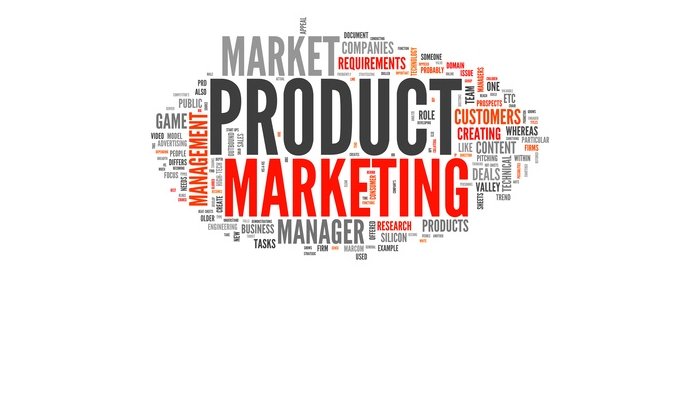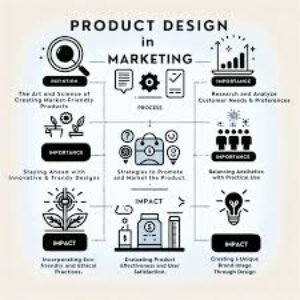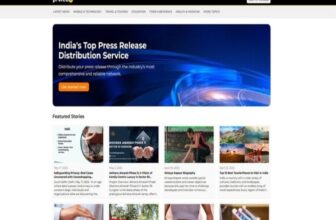
Introduction to Product in Marketing
In marketing, the product is the cornerstone of the marketing mix. It represents the tangible or intangible offering a company delivers to meet its customers’ needs and desires. The product is at the heart of every marketing strategy, whether it’s a physical item, a service, or even a digital experience.
A well-defined product goes beyond its functional attributes. It embodies the value, experience, and benefits that customers perceive. From its design and features to packaging and branding, every aspect of a product contributes to its appeal and market positioning. For example, Apple’s iPhone is not just a smartphone—it’s a symbol of innovation, simplicity, and premium quality.
Understanding the product involves recognizing its lifecycle stages: introduction, growth, maturity, and decline. Each stage demands unique marketing strategies to ensure the product stays relevant and profitable. A deep dive into customer needs, competitive analysis, and innovation is essential to crafting a product that resonates with the target audience.
In addition, the product serves as the foundation for building strong customer relationships. A successful product is not just about sales; it’s about delivering value, solving problems, and creating a lasting impact. In an ever-evolving marketplace, businesses must continuously refine and innovate their products to stay ahead of competitors and exceed customer expectations.
Ultimately, the product is more than just an item or service; it embodies a brand’s promise to its customers.

Features of Product in Marketing
A product is a fundamental element of the marketing mix, serving as the foundation for any business offering. Here are the key features of a product in marketing:
1. Tangible and Intangible Nature
Products can be tangible (physical goods like clothing, and electronics) or intangible (services like consulting, and streaming platforms). Regardless of form, they aim to fulfill customer needs or desires.
2. Core, Actual, and Augmented Levels
- Core Product: Represents the primary benefit or value (e.g., a smartphone’s ability to communicate).
- Actual Product: Includes the tangible aspects like design, quality, and branding.
- Augmented Product: Encompasses additional services like warranties, customer support, or after-sales service.
3. Customer-Centric Design
A product’s features, appearance, and usability are crafted based on customer needs, preferences, and feedback to ensure satisfaction and loyalty.
4. Product Lifecycle
Every product goes through stages: introduction, growth, maturity, and decline. Marketing strategies evolve at each stage to maximize its success.
5. Quality and Durability
The quality of a product directly influences customer perception, trust, and repeat purchases. A durable product adds value and enhances the brand’s reputation.
6. Branding and Differentiation
A product’s identity, created through branding and unique features, helps it stand out in a crowded market. Differentiation is crucial for competitive advantage.
7. Adaptability and Innovation
To remain relevant, products must adapt to market trends, technology advancements, and changing consumer preferences. Innovation is key to long-term success.
8. Packaging and Labeling
Effective packaging protects the product, enhances its appeal, and conveys essential information to the consumer.
9. Price Sensitivity
The perceived value of a product is closely tied to its price. Features and benefits must justify the cost to appeal to the target audience.
10. Emotional Connection
Great products evoke emotions, building a sense of trust, loyalty, and affinity toward the brand.
A well-designed product is the result of understanding customer needs, analyzing market dynamics, and continuous innovation, making it a pivotal aspect of marketing success.

Importance of Product in Marketing
The product is at the heart of the marketing mix and serves as the foundation for all marketing strategies. Without a product, there is nothing to promote, price, or distribute. Here’s why the product holds critical importance in marketing:
1. Core of the Marketing Mix
The product is the starting point of the marketing mix (Product, Price, Place, Promotion). Its features, quality, and value dictate how the other elements are shaped, including pricing strategies, promotional campaigns, and distribution channels.
2. Satisfying Customer Needs
A product is designed to address specific customer problems or fulfill desires. Its ability to meet or exceed customer expectations builds satisfaction and loyalty, forming the backbone of a successful business.
3. Brand Identity and Differentiation
Products create and reinforce a brand’s identity. A unique product with distinguishing features helps a company stand out in a competitive market, attracting and retaining customers.
4. Revenue Generation
Products are the primary source of revenue for any business. A well-developed product line that meets market demand ensures consistent sales and profitability.
5. Driving Innovation
In a competitive market, companies must constantly innovate their products to stay relevant. New or improved products can capture market attention, reinvigorate customer interest, and enhance a company’s market position.
6. Customer Loyalty and Retention
Quality products that deliver on their promises foster trust and build long-term customer relationships. A loyal customer base not only leads to repeat business but also creates brand advocates.
7. Market Expansion Opportunities
A strong product can open doors to new markets. Whether through customization, scaling production, or adapting features for specific demographics, products drive growth opportunities globally.
8. Sustainable Competitive Advantage
In saturated markets, a superior product provides a competitive edge. Features, quality, and innovative elements enable brands to dominate their segment and command customer preference.
9. Supports Marketing Communication
A good product inherently generates positive word-of-mouth and complements marketing efforts. Its value proposition and quality act as key selling points in advertisements and promotions.
10. Foundation for Business Growth
Products enable businesses to diversify their offerings, target new customer segments, and explore new industries. Their success fuels overall organizational growth and stability.
In essence, the product is the cornerstone of marketing. Its design, development, and delivery determine the effectiveness of all subsequent marketing efforts, ultimately shaping the success of the business.

Advantages of Product in Marketing
A product is the centerpiece of any marketing strategy and provides numerous advantages that contribute to the success and sustainability of a business. Here are some of the key benefits:
1. Foundation of the Marketing Mix
The product is the starting point for building a marketing strategy. It influences the pricing, promotion, and distribution decisions, ensuring a cohesive and focused approach to reaching customers effectively.
2. Customer Satisfaction
A well-designed product addresses customer needs and desires, creating a positive experience. This satisfaction fosters loyalty and long-term relationships, increasing repeat purchases and referrals.
3. Revenue Generation
Products are the primary source of income for any business. High-quality and in-demand products generate consistent sales, driving profitability and financial stability.
4. Brand Identity and Recognition
Products help establish and reinforce a brand’s identity. Unique, innovative, and reliable products create a strong brand image, making it easier for customers to recognize and trust the brand.
5. Market Differentiation
A superior product with distinctive features sets a business apart from competitors. This differentiation is crucial in crowded markets, helping businesses capture a larger share of the target audience.
6. Increased Customer Retention
By consistently delivering value, a good product ensures customer loyalty. Satisfied customers are more likely to stick with the brand and become advocates, promoting the product through word-of-mouth.
7. Scalability and Market Expansion
A successful product can open doors to new markets and demographics. Businesses can scale production, expand into different regions, or modify the product to cater to diverse audiences, driving growth.
8. Supports Innovation
A strong product encourages innovation. By improving features, functionality, or design, businesses can stay ahead of industry trends and maintain a competitive edge.
9. Enhanced Marketing Efforts
A high-quality product simplifies marketing campaigns. Its unique value proposition and benefits become key talking points in promotions, boosting the effectiveness of advertising and communication.
10. Building Trust and Credibility
A product that delivers on its promises builds trust with customers. Reliable and consistent performance enhances the brand’s credibility and reputation in the market.
11. Opportunities for Diversification
A successful product line provides opportunities to introduce related products or services, diversifying the business portfolio and reducing dependency on a single revenue stream.
12. Long-Term Profitability
A product with a strong market presence can generate sustained revenue over time. Even as markets evolve, improvements and adaptations can keep the product relevant and profitable.
In summary, the advantages of a product in marketing extend far beyond sales. From building customer loyalty to driving innovation and growth, the product is at the core of every successful marketing strategy. It lays the groundwork for business expansion, competitive positioning, and brand recognition, ensuring long-term success in a dynamic marketplace.

Disadvantages of Product in Marketing
While products are central to any marketing strategy, they also present certain challenges and disadvantages that businesses must address. Here are some key disadvantages of products in marketing:
1. High Development Costs
Creating a new product or improving an existing one can be costly. From research and development (R&D) to testing, manufacturing, and marketing, the expenses can quickly add up. These high costs can strain a business, especially for startups or small businesses with limited resources.
2. Market Saturation
In some industries, the market becomes saturated with similar products, making it harder for a new or existing product to stand out. The competition becomes fierce, and businesses may struggle to differentiate themselves, leading to declining sales and profitability.
3. Short Product Life Cycle
Certain products have a short life cycle due to changing consumer preferences, technological advancements, or market trends. Products may become obsolete quickly, requiring frequent updates or replacements, which can be costly and challenging to manage.
4. Risk of Failure
Even with thorough market research and planning, there is always a risk that a product will fail to meet customer expectations or that demand won’t materialize. Product failures can lead to wasted investment, damage to brand reputation, and financial losses.
5. Complex Supply Chain Management
The process of manufacturing, distributing, and delivering products can be complex. Supply chain disruptions, such as raw material shortages, production delays, or logistical challenges, can negatively impact product availability and business operations.
6. Customer Expectations
As consumers become more informed and selective, their expectations for quality, features, and pricing increase. Meeting these high expectations requires constant innovation and attention to detail, which can be resource-intensive.
7. Pricing Pressure
Price sensitivity can be a major challenge for businesses. If a product is priced too high, it may struggle to attract customers, while a lower price may not cover costs or maintain profitability. Finding the right balance is crucial but difficult in competitive markets.
8. Legal and Regulatory Challenges
Products must adhere to various legal and regulatory standards, especially in industries like healthcare, food, and technology. Failure to comply with these regulations can result in costly fines, product recalls, or damage to the brand’s reputation.
9. Changing Consumer Preferences
Consumer tastes and preferences can shift rapidly. A product that is popular today might not be in demand tomorrow. Businesses must constantly monitor market trends and adapt their product offerings, which can require additional investment and effort.
10. Environmental Impact
Products can have environmental implications, from the sourcing of raw materials to the disposal of the product at the end of its life cycle. As sustainability becomes a growing concern, businesses must consider how their products affect the environment, which can increase costs and affect brand image.
11. Complex Marketing Strategies
Promoting a product successfully requires a well-developed marketing strategy that encompasses market research, pricing, advertising, and distribution channels. Developing and executing these strategies can be complex and time-consuming, particularly for new or evolving products.
12. Risk of Imitation
If a product becomes successful, there is a risk that competitors will imitate it. This can lead to a loss of market share as competitors offer similar products at lower prices or with minor improvements.

While products are at the heart of marketing efforts, they come with their own set of challenges. High development costs, market saturation, and the risk of failure are just some of the disadvantages that businesses face. Understanding these potential drawbacks is crucial for businesses to plan effectively, manage risks, and ensure that their products continue to meet customer needs while staying profitable.







